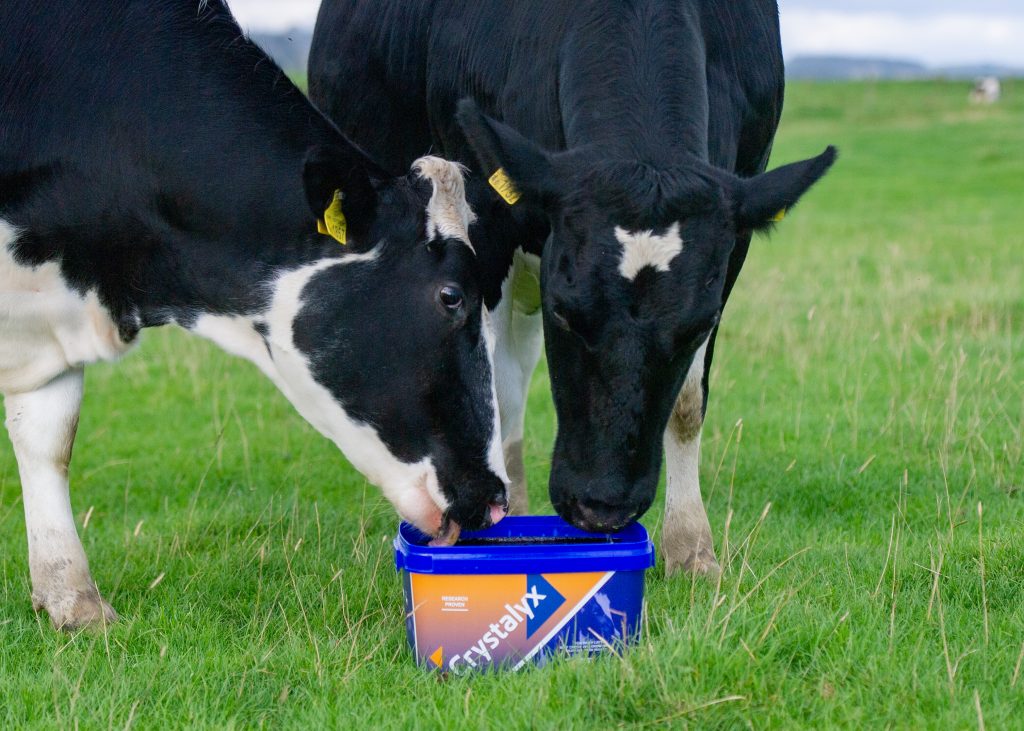Impact of Covid-19 on the dairy industry:
With the effective disappearance of the hospitality sector as a result of the Covid-19 outbreak, it’s inevitable we’ve seen huge pressure on the milk supply chain, both in terms of liquid and dairy products. The UK food service sector usually needs around 10 million litres of milk per week and around 50% of that has been struggling to find a home – just as we enter the “spring flush”. With deflated and variable spot milk prices, the introduction of unprecedented levels of A and B quota prices, and significant disruption anticipated for some time to come, there’s no doubt the pressure to “take the foot off the gas” in terms of production will be felt by many of the UK’s dairy units.
Feeding less compound feed is clearly an option for the higher yielding cows, which can then have a greater reliance on spring grass, but lower yielders can milk well off grass alone, with little or no need for any concentrate input.
Grass Alone Does Not Supply A Nutritionally Balanced Diet
Whilst high quality grass, especially spring grass, is an excellent feed, it is not a nutritionally balanced feed source, often containing excess protein whilst being deficient in essential minerals and trace elements that is needed for optimum animal health and performance in the long-term. It is this long-term health and performance – getting cows back in calf and maintaining a sensible body condition at grass – which will be the key to future farm profitability.
Beware of Metabolic Problems
Poor total dry matter (and energy) intakes in early lactation encourage the mobilisation of body fat reserves as a supplementary source of energy to maintain milk output. But excessive mobilisation of these reserves can give rise to metabolic problems such as fatty liver and ketosis, both of which can have knock-on effects in terms of fertility and immune response.
Feed Supplements Can Balance the Diet Of Grazing Animals
What is needed is something which can stimulate the rumen bugs to digest forage with improved efficiency – like Crystalyx! Any increase in the speed of rumen fermentation of forage is likely to increase forage intakes (due to a reduced gut fill effect) whilst improved digestive efficiency releases more energy from the forage consumed. Both scenarios increase the digestible energy intake of the cow.
The minerals and trace elements present in Crystalyx will balance the nutrient deficiencies in grass, to keep the cow healthy and optimise her fertility. The minerals can also act as buffers to help buffer rumen acidity, whilst licking itself stimulates saliva production (saliva contains 10% sodium bicarbonate – a natural buffer) both of which help to maintain a healthy rumen pH. And a healthy rumen pH means the rumen bugs will be harder at work digesting forage which increases nutrient supply to the cow and improves the efficiency of forage use.
Independent university research has shown that feeding Crystalyx increases the rate of cellulose digestion in the rumen, which helps maximise forage (and energy) intakes in grazing cows. This reduces the need to mobilise body fat reserves helping to maintain better body condition and fertility. Whilst mid and late-lactation cows typically have improved milk quality due to improved forage digestion. Crystalyx can also help even out irregularities and variability in forage quality and studies at Newcastle University have shown that the poorer the quality of the forage, the greater is the benefit to feeding Crystalyx.
Find your nearest Crystalyx stockist here.


